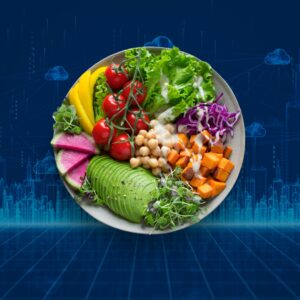Categories
 Artificial Intelligence (AI) is one of the most discussed topics throughout the world today. Unfortunately, many people paint a picture of doom and gloom, with super-intelligent robots taking over the world and subjecting humans to eternal servitude. In actuality, AI will give us tools and insights that will improve our lives dramatically. This is a simple explanation of how AI works and how it will benefit us.
Artificial Intelligence (AI) is one of the most discussed topics throughout the world today. Unfortunately, many people paint a picture of doom and gloom, with super-intelligent robots taking over the world and subjecting humans to eternal servitude. In actuality, AI will give us tools and insights that will improve our lives dramatically. This is a simple explanation of how AI works and how it will benefit us.
Data, Data, Data
At its core, AI is really just a massive processor of data. The more data that can be fed into an AI system, the better. This data can come from sensors, databases, and even the internet itself. Think of it as throwing thousands of random vegetables into a giant salad bowl. After the data is gathered, the system has to process it. This includes discarding “junk data”, then normalizing and converting it to a suitable format for analysis. This would be similar to picking out the rotten or unripe vegetables from the bowl.
Machine Learning
Some people refer to Machine Learning synonymously with AI. However, Machine Learning algorithms are the data processing structures built by a programmer to drive AI. The programmer is essentially training the AI model to predict outcomes based on pre-existing data.
Back to our salad example, the algorithm would be developed by the chef to have potential salad recipes designed by the AI model.
There are various machine learning algorithms used by AI. These are supervised learning, unsupervised learning, and reinforcement learning.
For supervised learning, some guidance is given to the AI system by tagging data that is being input. This could be like tagging the different vegetables as such lettuce and spinach, or even telling the model which of the chef’s recipes are the most popular. The AI model would then use this info to categorize similar inputs and would learn to detect relationships between these different inputs. It will determine that lettuce tends to go well with celery in a salad. With supervised learning, biases can be inserted into the model since it is being constrained by the assumptions of the data being input into it. This is similar to developing the model based on a chef’s knowledge that lettuce goes well with celery, walnuts, and grapes in a Waldorf salad.
For unsupervised learning, untagged and random data is input into the AI model. The model is then left to figure out how the data relates to each other and it detects patterns and similarities between the data on its own. This is more fun, because the AI model may come up with potential outcomes that a human would never expect. It may come up with the next most popular salad because the chef would have never guessed that lettuce and a rare exotic mushroom would make a great combination.
Reinforcement learning is basically training the AI model with a trial and error process and it learns how to make decisions based on rewards and penalties. The model may be penalized if it tries to use pork skins in its recipe and rewarded if it uses carrots and it will make adjustments accordingly.
Training
Once the data and algorithms are prepared, the AI model then goes through a training process. During this process, it compares the predicted outputs to the actual outputs and makes adjustments as necessary to improve its accuracy. This is similar to using the model to predict excellent salad recipes, then having actual people taste test them. When the model predicts that something will taste great, but the people say that it tastes like feet, then the model will adjust to more accurately predict how it will actually taste to real people. This process continues multiple times until the model improves its prediction accuracy.
Decision Making
While everything up to this point is a “black box” to most people actually using AI tools, the decision making aspect of AI is what we will all be exposed to. In this step of the process, the finely tuned AI model will take new data, quickly process it, then predict the likely outcomes. This is what you experience when using popular tools such as ChatGPT. In our salad example, this could be an AI-powered kiosk that you walk up to at a restaurant and answer a brief survey about yourself. It could ask you to tell it about any food allergies, your current mood, your typical food preferences, etc. The kiosk will then design a custom salad that it knows that you will love based on this information.
Continuous Learning
One of the great things about AI is that it is designed to be flexible and adjust how it processes data over time. Very few things in this world are static and AI accounts for that. It continuously digests new data and makes adjustments to its model accordingly. It may know that the lettuce imported from Brazil is more bitter than usual this season and will adjust its recipe to make the salad more palatable for the person who ordered it.
Artificial Intelligence is a powerful force that will make us more intelligent and efficient. We must avoid the fear mongering that is attempting to paint a bleak picture of AI and embrace its ability to make our lives significantly better. At the very least, we may benefit from having the greatest salads ever made by an AI-powered kiosk.
FieldLogix is one of the first in our industry to use AI to improve fleet safety. Click here learn more about how AI works within FieldLogix to improve driver safety.
